This is the first of a two-part article concerning the SAMP comment period. We’re including a few paragraphs of background because the process has been so lengthy–with many years of delay. The feedback we’ve received thus far has been confusion, partly because the information on the Port’s official SAMP website refers to events from 2017-2019.
- Part 1 (this article) provides background on the SAMP, how we got here, what the environmental review looks like, our main goals during that 45 day comment period, and your homework to get ready to comment effectively on October 21st.
- Part 2 provides specific suggestions on how, when and where to provide those comments and what happens afterwards.
What is the SAMP?
The SAMP is the Sustainable Airport Master Plan. You’ll hear the term used in two ways:
- It is the next major expansion plan of Sea-Tac Airport. The SAMP was announced in 2012 as part of the Port’s Century Agenda–an aggressive business plan which is responsible for the record increases in flight operations in the past decade. The goal of the SAMP is to enable operations to continue to grow at that same pace for at least the next decade.
- It is also the required environmental review process on the construction projects necessary to achieve those goals. In the last expansion that meant building a Third Runway, a single, very dramatic construction project which literally expanded the hill on which the airport sits. The SAMP is very different. It consists of 31 small projects (highlights) on the current footprint, none of which are visible to people outside the airfield. It has, in fact, been going on for several years. We describe this in our 2-minute slideshow The Factory.
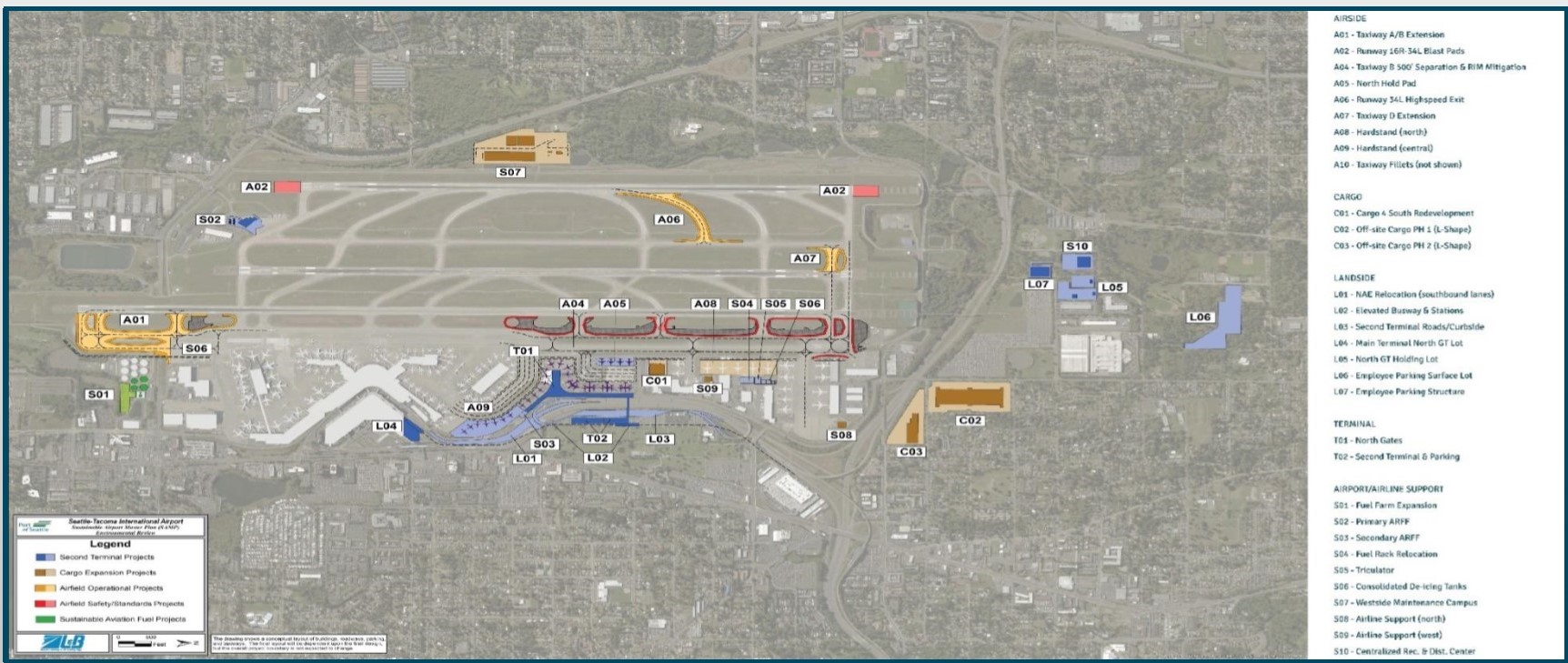
Ancient History: The Last Expansion (1996-2008)
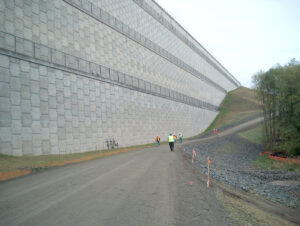
Between 1996 and 2004, surrounding cities spent $15.5 million dollars fighting the last airport expansion, known as the Third Runway project. After discovering decades of major water pollution, problems so severe experts said could not be properly mitigated, surrounding communities sued to stop construction. They won every legal battle, delaying construction for seven years.
In 2003, a frustrated State, which strongly supported the Third Runway, changed a tiny but key law concerning water quality requirements. That provided just enough room for the State Supreme Court to affirm a highly controversial appeal, which allowed the project to finally proceed. The Third Runway opened in 2008 at a cost of 1.1 billion dollars, 400 percent over budget.
At the time, both the community and local politicians were deeply scarred, by the legal costs, by the absence of better mitigation/compensation, and also the obvious gaming of the system. Electeds became extremely reluctant to push back on any future expansion, with many adopting an “If you can’t beat him, join ’em” mentality–one which still persists.
Given that mood, hearing that another major expansion was occurring just four years later was not a message anyone had the energy to respond to.
But the harms predicted for the Third Runway, including dramatic increases in noise and pollution, economic and educational decline, depressed property values, and a reduced tax base all came true for communities like Des Moines and Burien.
If it goes forward as proposed, the SAMP will create the same long-term community harms as the Third Runway.
More recent history: SAMP v1 (2017 – 2019)
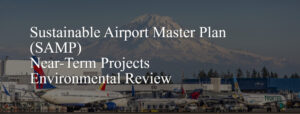 In 2017, the Port unveiled its initial construction ideas for the SAMP and began the required public outreach program.
In 2017, the Port unveiled its initial construction ideas for the SAMP and began the required public outreach program.
In 2019, the Port delayed the next step in this process (the regulatory review we’re about to undergo now). They gave two reasons:
- First, the Port said they wanted to explore combining both State (SEPA) and Federal (NEPA) reviews into one process and that doing so might result in a better outcome for local communities.
- Second, there was also a lot of discussion as to ‘EIS or EA’. This gets a bit tricky. When approving large projects, Federal regulators decide whether the developer (in this case, the Port of Seattle) should submit one of two forms environmental review:
-
- An environmental impact statement (EIS) is a highly detailed look at every aspect of a construction project. It’s usually required by regulators when significant mitigation concerns are expected.
- An environmental assessment (EA), on the other hand, is a much less rigorous process and is usually allowed by regulators when they do not anticipate major environmental problems.
However, the State (SEPA) process is always an EIS. (Don’t worry about that now. We told you it was tricky.)
In 2020 COVID hit, causing another four-year delay, with neither decision having been made by regulators (the FAA). That gets us to today.
Today
In September of 2024 the Port announced that the environmental review originally scheduled for 2019, will finally begin on October 21st 2024.
The Federal piece will be an EA–the less rigorous environmental review, not an EIS. It will also be divided into two separate processes, Federal (NEPA) and State (SEPA), not the combined process the Port had suggested in 2019.
 The October 21 launch will consist of the Federal document (called the Draft EA) and a 45 day comment period.
The October 21 launch will consist of the Federal document (called the Draft EA) and a 45 day comment period.
- The Draft EA will provide details on all those 31 construction projects, plus a description of the expected environmental impacts.
- The 45-day comment period will allow all stakeholders, including cities and residents, to read the document and express their concerns.
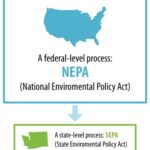 The comment period will close on December 5th, 2024. Then, the document and all those comments will go first to the FAA (NEPA), and then to the Port of Seattle (SEPA) for evaluation according to Commission Resolution #3650.
The comment period will close on December 5th, 2024. Then, the document and all those comments will go first to the FAA (NEPA), and then to the Port of Seattle (SEPA) for evaluation according to Commission Resolution #3650.
Each agency has different areas of authority, but ultimately each can independently make one of three broad decisions:
- That the environmental impacts of some or all projects are not significant and need no mitigation.
- Or, that they have some significance with recommended mitigations .
- Or, that one or more projects raise enough concerns, that a full environmental impact statement is required and should be undertaken to study the project in far more more detail before they can move forward.
The Challenges
Taken together the SAMP will create as many new operations as the Third Runway. But the fact that the Federal review will be an EA rather than a full EIS suggests that regulators assume that these projects may require only minimal mitigation.
Our first goal as a community is to get Federal regulators to choose Door #3, a full Environmental Impact Statement (EIS).
The Port’s goal is always to minimize the impacts of any airport expansion. It has done and will continue to attempt to limit the depth of environmental review in terms of place and time.
- Place: the Port describes the SAMP as 31 small projects. In one sense this is true. Individually, only a few of them will make a great deal of difference to the community. But evaluating these projects separately makes no more sense than trying to remove any key ingredient from a recipe and expecting it to work. By the airport’s own admission, these 31 projects must be built together in order to achieve their growth targets. With the SAMP, the whole really is greater than the sum of the parts.
- Time: The Port will attempt to limit the discussion to the immediate construction period, and not consider the broader community impacts of all the increased airport activity. both into the future and over the previous decade.
Our comments: Three letters
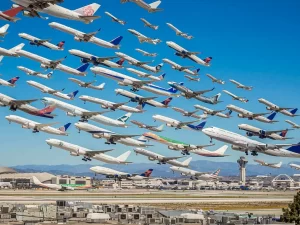
Our comments must completely re-frame the SAMP as what it is, the Fourth Runway, one mega-project that will have massive cumulative impacts to surrounding communities, impacts which will require both short term mitigation and long-term compensation.
Again, the first step to get there is just three letters: EIS. The Port has had tremendous good fortune in minimizing the apparent harms of the SAMP. Our first major goal is to slow down this train and obtain the full Environmental Impact Statement we should have had five years ago–before COVID derailed that process.
- We need to make the case not only concerning the immediate impacts of construction, but also the cumulative impacts of having so much more activity at and around the airport over the next decade
- We must also insist that these long-term impacts look not just to the next decade, but also backward to the last decade. Remember: this expansion really began in 2012 when the Century Agenda was announced. That is when the dramatic increases in flight operations began. This dramatic growth was an intentional push by the Port of Seattle, not a passive response to demand by the airlines. The airport worked very hard to recruit more flights away from other airports!
- Beyond that we need to review every aspect of the airport which contributes to this expansion, both on and off the airfield. This means every construction project since 2012, including maintenance operations and previous mitigations (because we need to see if the previous mitigations put in place during the Third Runway are working as advertised). We also must take into account roadway improvements like the Arrivals Drive and especially SR-509 as we discuss here. The entire system must be evaluated and re-evaluated for impacts on air, water and noise pollution, and also wildlife economics, crime, education, etc.
Your Homework: Three Words
Our specific suggestions for comment will be covered in Part 2 of this article, which will be published, along with the EA document, on October 21st.
For now, we ask you to read through the at least some of previous scoping comments from 2019.
This is also a bit tricky. Scoping Comments are earlier in this process and different from what you will be doing on October 21st. When the SAMP was announced, the public was asked to tell regulators what should be studied, that’s the scope of work.

The comments you will be providing on October 21st will be about the scope of items that ended up being studied from 2019 until 2024. They may be several years old, but those scoping comments are still very useful. Many came from highly informed citizens, Cities, and subject matter experts. When you read the October 21st Draft EA, you will be able to see how well regulators were listening. Plus, these earlier commenters have already done much of the work for you. Use it!
As you read through them, try to keep in mind three words: Cumulative. Mitigation. Compensation.
- Cumulative Impacts from 2012 to now, from now until 2032, and across the entire flight path–not just on or near the airfield!
- Mitigation We must insist on reducing the negative impacts, not accepting substitutes and false promises about future technologies or second airports.
- Compensation. There is no runway to ‘stop’. But there are plenty of negative impacts that we will continue to endure on behalf of economic benefits to the rest of the State. We must insist on progressive ongoing compensation based on flight operations, not one time grants.
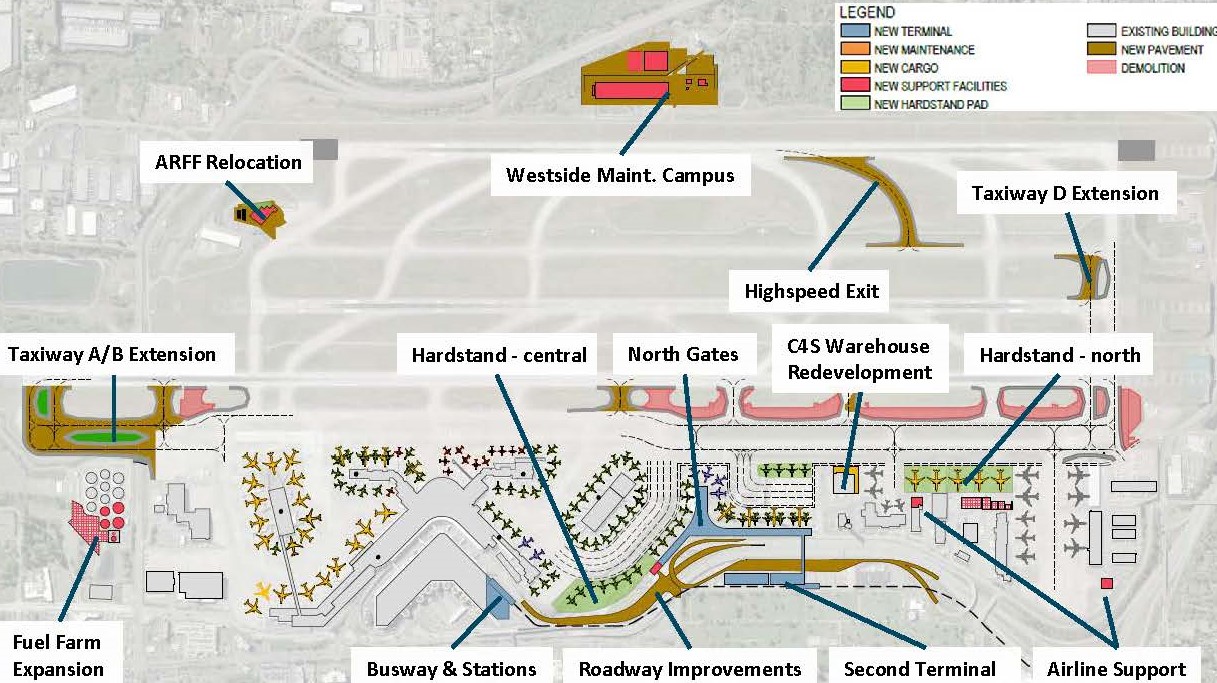
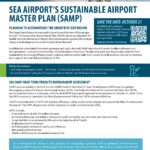
Is there a way for SeaTac to better insulate my windows and doors to reduce noise pollution in my home?
Hi, Jennifer. Please look at this page and fill out the form. We’ll get back to you asap. Thanks! https://seatacnoise.info/protest/port-package-problem-contact/
We bought our condo at a high price. With the fourth runway, it will affect our home and Reale value. What is going to be done for all of us who currently live close to the flight path. It appears to all negative for our city of Des Moines.